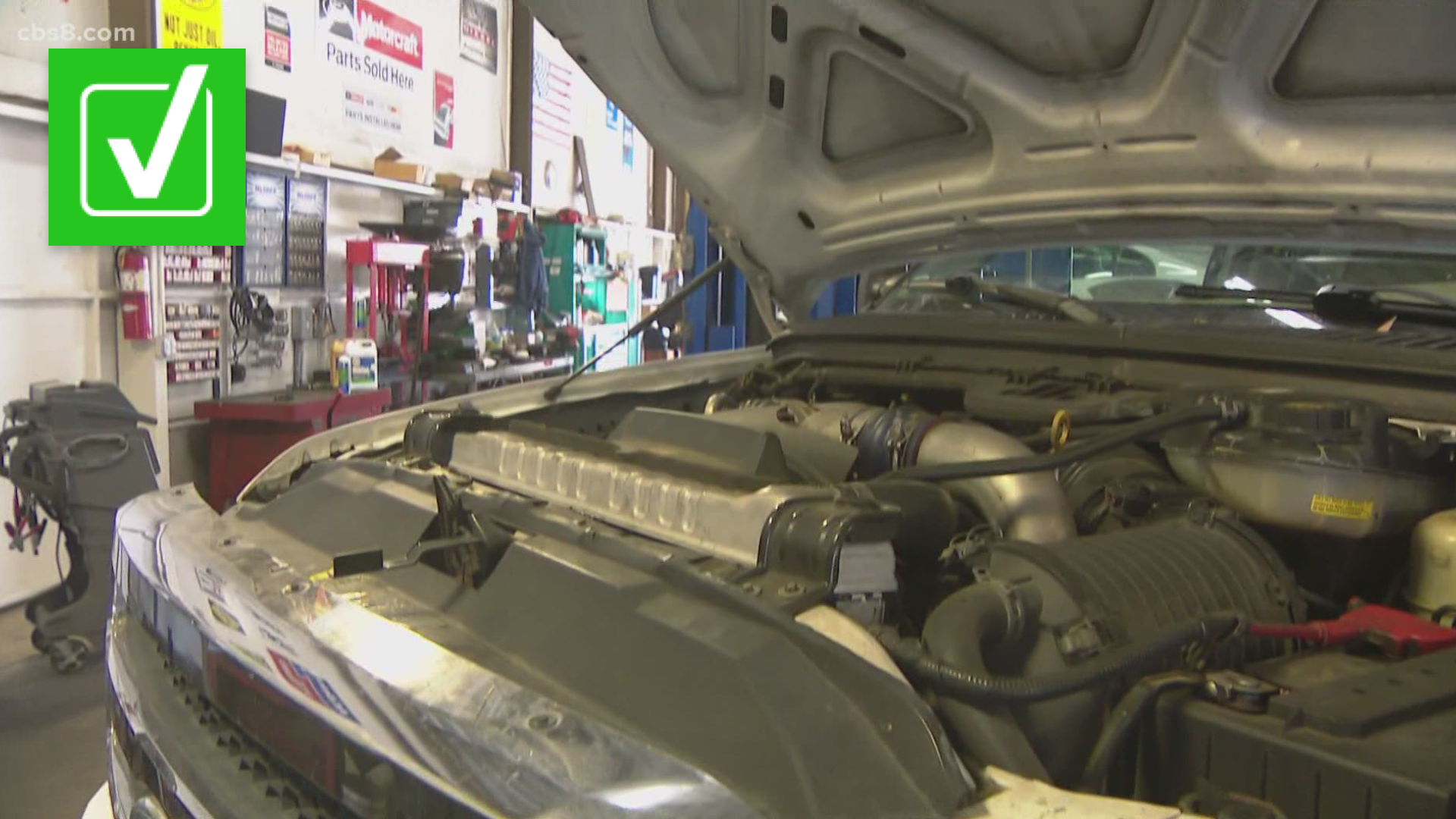SAN DIEGO — With life almost returning to normal, the traffic on San Diego’s roads is getting back to what it was before the pandemic.
But if you’re going back to work soon and your car has been collecting dust, you might be in for a rude surprise when you turn your key in the ignition.
“Car batteries like a phone battery,” Ray Frey, the owner of Ray Frey Auto Center in Kearny Mesa, said. “When you don’t use them, you actually have to charge them.”
It’s a busy day at his garage. Frey himself knows a thing or two about cars. For example, there are several things in your car that stay on while the engine is turned off.
The memory on the inboard computer, the security system and the internal clock are all drains on your car's battery.
“There’s usually 20 to 50 million amps drain on a battery at all times.” Frey said. “Over a three month period, that’s enough to drain the battery down completely.”
In order to start, your car's battery needs to be charged. Hybrid cars get more juice for their batteries because it charges every time you hit the brake. If you haven’t driven in a few months, simply jumping the battery will not necessarily fix the problem.
And if it’s completely dead, you’ll probably need a new one, which can run you up to $200. If your car is just getting back on the road after months in the driveway, it’s probably a good idea to get it checked out by a mechanic.
But in the future, if you want to keep your ride in tip top shape, Frey has some advice.
“The best thing to do for a car and the battery itself is to start it up once a week and let it run for five or ten minutes,” he said. “Gets the oil through the engine. It just makes everything work better.”
WATCH: Maintaining your car during the coronavirus pandemic

